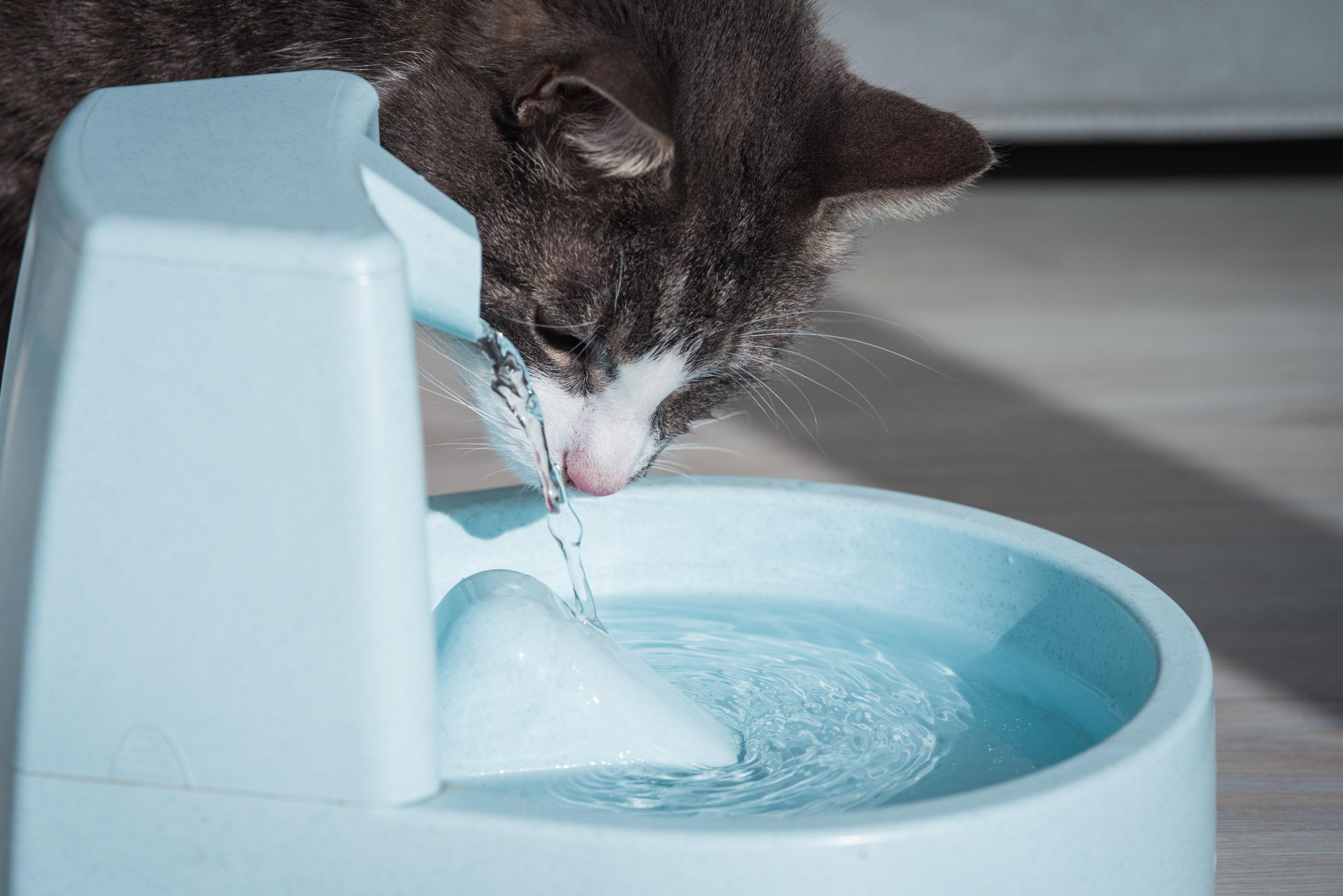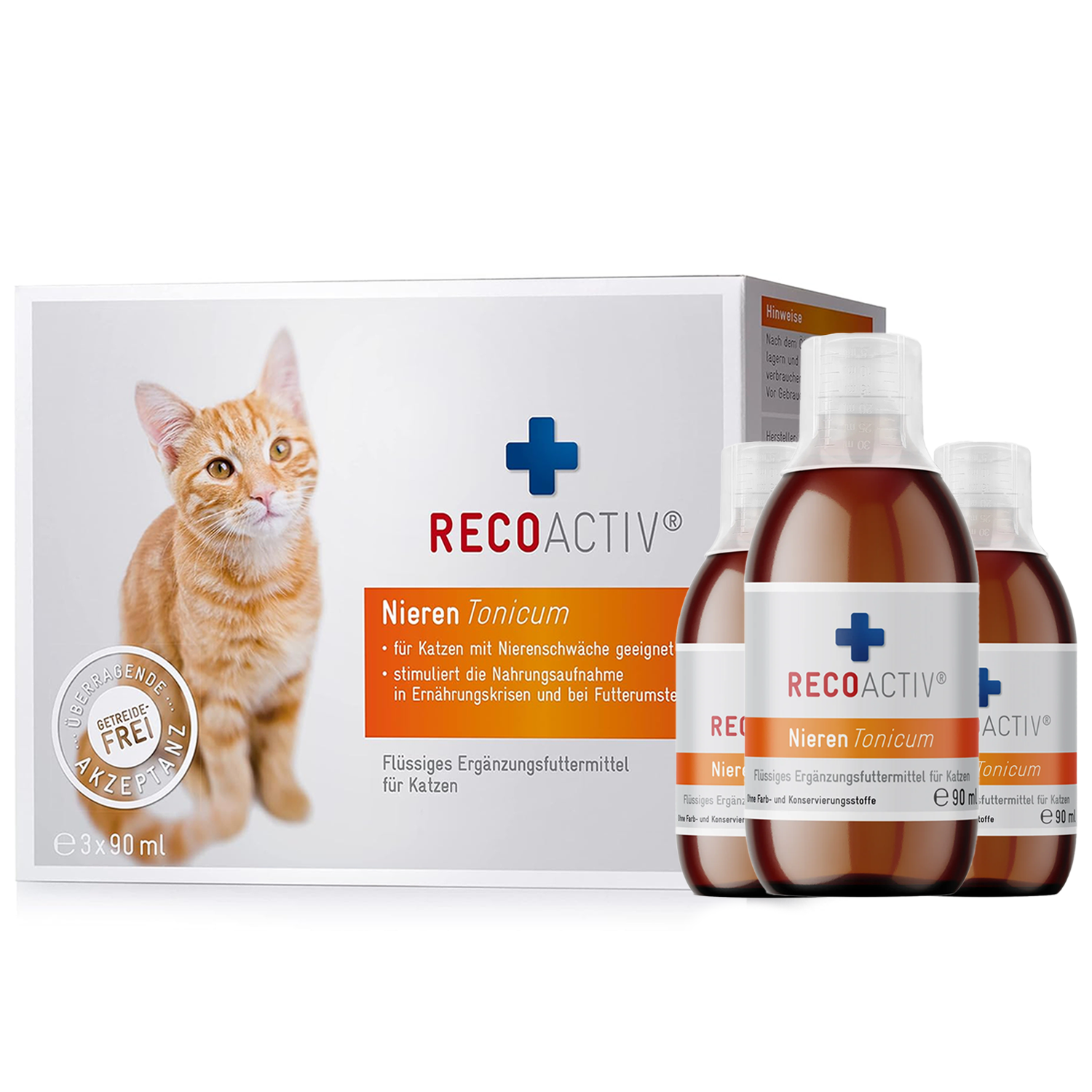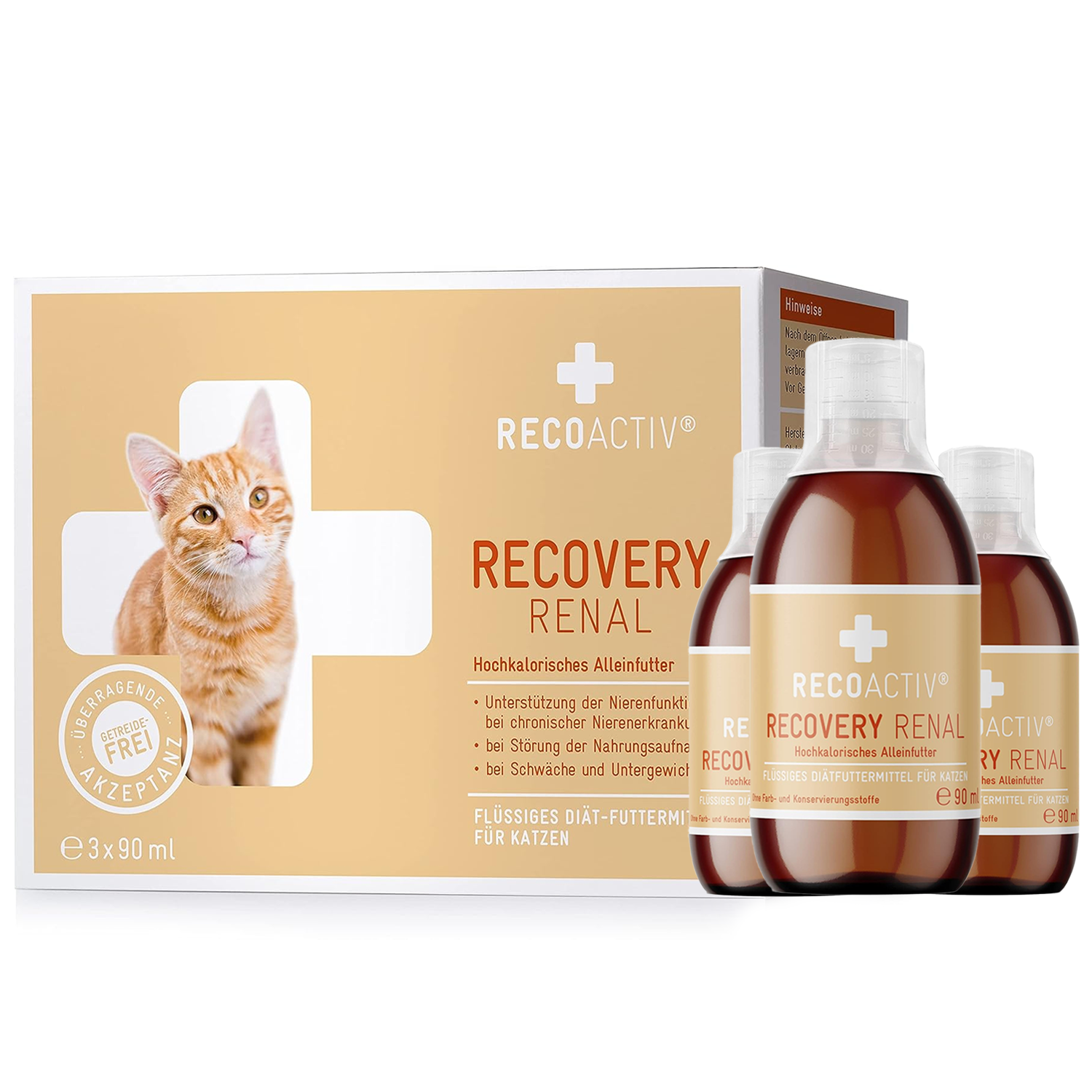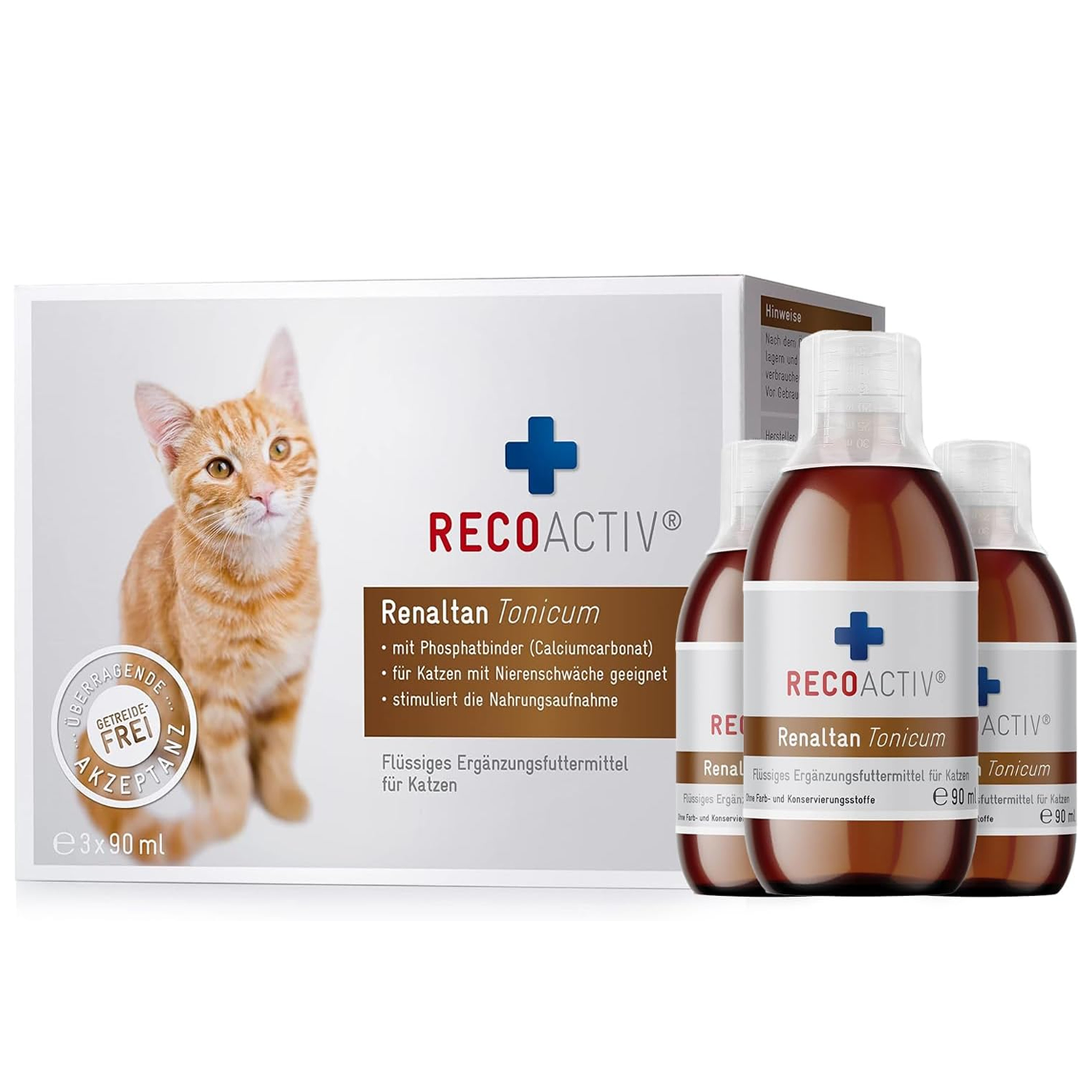Many cats that have already reached the age of ten or more suffer from chronic kidney dysfunction. Accordingly, sick animals are often treated. Important: the special kidney diet.
In this article we explain everything from the first signs to the treatment of kidney dysfunction and the options available.

What are the kidneys actually for?
The kidneys are vital organs that perform a variety of tasks in the body. These are:
- Ensures balance of the body's fluid balance through excretion via urine
- Filter through which waste products are removed from the blood, but important substances remain in the body
- Production of various substances that are important for calcium balance, blood pressure and red blood cell production
Like humans, cats have two kidneys . Both are bean-shaped and each about three centimeters tall . A kidney consists of thousands of small functional units, also called nephrons. Their job is to filter the blood. To do this, it is constantly passed through the kidneys.
If a cat is young and healthy, not all nephrons are in use. Many also serve as so-called reserve units , which are only needed when others no longer function. As cats age , kidney damage often occurs. But even so, some nephrons die over time. As a result, the reserve units take over their functions until all nephrons are working.
If the damage to the kidneys continues, the cat may show the first signs of chronic kidney failure .
What happens to the kidneys when you have chronic kidney disease?
In the case of kidney failure, the diseased nephrons fail and thus lose their important ability to regulate the composition of urine . Nephrons that are still healthy suddenly have to work a lot more because the tasks are not getting any less. As a result, an overload often occurs and they ultimately fail as well. This also explains the fact that chronic kidney disease often worsens over time if left untreated.
What causes chronic kidney disease?
If a cat suffers from chronic kidney failure, it can have various causes. In order to be able to help the cat optimally, it is important to know them or to be able to rule out certain reasons:
- Medication
- Poisoning that can occur from lily plants, antifreezes, pesticides, herbicides and solvents
- Infections
- Heavy metals
- Pyelonephritis
- congenital kidney diseases, such as PKD (Polycysric Kidney Disease)
- Urinary retention caused by urinary stones
- Kidney stones
- Autoimmune diseases
- Immune system diseases such as FIP (Feline Infectious Peritonitis)
- Tumor in the kidney
- Phosphorus deficiency due to incorrect feeding
Acute kidney disease often occurs due to inadequate blood flow to the kidneys . This can happen when cats lose a lot of fluid due to a lack of water, shock or severe blood loss, for example as a result of an accident, and therefore suffer from dehydration . Then the kidneys can no longer receive an adequate supply of blood, which ultimately means they stop functioning for a while.
In this case, veterinary help is absolutely necessary so that the cat's kidneys can function again as quickly as possible. Otherwise, it can lead to chronic kidney disease .
Acute or chronic kidney disease
If the cat has acute kidney disease , it means that it has only been present for a short time . If the disease is then treated professionally, there is a high probability that the kidneys will recover completely .
However, if the cat has been sick for a long period of time , it is a case of chronic kidney failure . In many cases, this has already existed for two months or longer at the time of diagnosis. Unfortunately, the exact trigger can often no longer be determined and it is then no longer possible to restore the diseased tissue. The cat's body replaces it itself with connective tissue . This can be thought of as the formation of a scar. As a result, the affected kidney becomes smaller, so that it is also referred to as a “shrinkage kidney” .
If kidney failure is not treated, it can progress and ultimately lead to kidney failure . This must be counteracted with targeted treatment. This usually happens through a special kidney diet , with which the disease can be stopped or at least slowed down in its progression. A kidney supplement for cats is also often useful. The cat then benefits from a significantly better quality of life.
What symptoms occur?
Chronic kidney failure can gradually progress to different stages and associated symptoms in cats. The stages are classified from I to IV.
- Stage I - without clinical signs: The cat appears healthy on the outside and there are no visible signs of the disease.
- Stage II - hardly any clinical signs: While some cats develop the first symptoms in this stage, others do not yet notice the disease at this point. Possible symptoms include frequent urination and increased drinking.
- Stage III - clinical signs increase: Only in this stage can clear signs such as frequent drinking and urination, loss of appetite, weight loss, vomiting, dull and unkempt fur, lack of fluids and weakness be seen.
- Stage IV - severe clinical signs: Internal poisoning by toxic metabolic breakdown products takes place in the cat's body. This can cause severe vomiting, nausea, refusal to eat, weakness, lethargy and dehydration.
Chronic kidney disease often manifests itself through the following symptoms in cats:
- weight loss
- Loss of appetite
- noticeably frequent drinking and urination
- Dehydration
- increased need for sleep
- dull and unkempt fur
- Bad breath
- weakness
However, these symptoms can also be associated with other illnesses , so they are not a clear sign that the cat is suffering from chronic kidney failure. If cats suddenly refuse to eat, other reasons may also be possible. It is important that you then observe them. If the symptoms worsen or if more develop, you must definitely visit the vet .

How is chronic kidney disease diagnosed?
Veterinarians can diagnose chronic kidney disease through various examinations:
- Blood test: This determines how high levels of urinary substances are present in the cat's blood. SDMA, urea and creatinine values are crucial for this. If 30 percent of kidney function has already failed, the SDMA level increases. The urea and creatinine values, on the other hand, only increase when there is a disorder in around two thirds of the kidney function. If the kidney failure is already more advanced, this will be reflected in further changes in blood values. Anemia or acidification of the blood can then occur. The phosphorus content in the blood is then also too high, which is often accompanied by a change in the calcium and potassium content in the blood.
- Urinalysis: This often shows that the urine is no longer properly concentrated. There is also increased excretion of protein in the urine.
- Ultrasound examination: Cats with chronic kidney failure often have shrunken kidneys, which can be determined by an ultrasound examination.
What are the consequences of kidney disease in cats?
If cats suffer from kidney dysfunction, this can have far-reaching and unpleasant consequences for them. For this reason, such a disease should not be left untreated . The possible consequences of impaired kidney function are:
- inadequate supply of various nutrients, for example minerals
- high blood pressure
- dehydration
- Overactive parathyroid gland and resulting disturbances in the phosphate/calcium balance
- Visual impairment in advanced stages
- Renal calcification
What is the optimal treatment?
Once kidney cells are damaged, they can no longer regenerate . This makes it even more important that an early diagnosis is made. In this case, cat owners can actively counteract progressive damage to the organs.
First of all, it is important that the food is changed . The cat should now consume less salt and phosphorus and needs high-quality, balanced proteins . Special kidney diet food meets these requirements and thus offers the best conditions for a successful change in food. However, some cats don't take this well at first. Then it is advisable to use a kidney tonic , like the one we offer at Recoactive, to support this.
Kidney disease can cause the cat to become dehydrated . That's why you should always provide her with enough fresh water . However, some cats do not feel sufficiently stimulated by standing water in drinking bowls. In this case, drinking fountains , which can be obtained from pet stores, can help. Because the water in it is always moving, it doesn't taste stale so quickly.
In parallel to these measures , treatment with medication may be necessary. However, a veterinarian will decide on this. Cats receive pharmaceutical support for drainage, blood pressure and in the event of nutrient deficiencies.
What are the prospects for successful treatment?
If the cat has been diagnosed with age-related kidney damage , it can still live for a few years. However, it is important that the cat is well cared for and that all veterinary recommendations are followed. Sick cats should always be observed and examined regularly . This means that the medication treatment can be adjusted again and again.
It is also important that the sick cat is weighed frequently and that food and water intake is monitored . The resulting information helps veterinarians keep an eye on the cat's disease progression and respond with changes to treatment if necessary.
The treatment of the sick cat takes place not only as part of regular visits to the vet, but above all in everyday life !
Kidney diet
In order to stop the disease from progressing as much as possible, feeding the cat correctly is crucial. She now needs a special kidney diet , which is characterized by food low in phosphorus . There is also less protein in this than in normal complete cat food. This ensures that the diseased, weak kidneys do not have to work so hard. An additional phosphate binder helps to bundle the material.
Snacks or supplemental vitamin preparations often contain ingredients that can cause further damage if you have kidney disease. For this reason, we strongly advise against giving them to the cat without prior consultation with veterinarians. Especially for cats with kidney failure, it is important that the diet is tailored to the degree of the disease .
Not every cat will accept the diet food immediately. Then it is important to gradually get her used to it or make it more palatable to her. It may help the cat if a small amount of the diet food is mixed into its regular food every day. Then the proportion of normal food must be reduced further and further . To give the cat a taste, it sometimes helps to add a little tuna oil or small pieces of fried meat . If the cat still refuses food, it is important to visit the vet again.
Promote water absorption
Cats are often naturally bad drinkers. However, you can still encourage regular fluid intake. It is important that the water bowl is in a quiet place and that it is cleaned or replaced regularly . Algae quickly settle in stagnant water, especially in the warm months. The drinking bowl should also not be located directly next to the litter box .
It is advisable to place several drinking bowls for the cat in the apartment. This corresponds to their natural drinking behavior and can arouse curiosity. If that doesn't help, so-called drinking fountains for cats are recommended.
If the cat generally refuses to take in liquid in the form of water, you should mix it with its food. Regular infusions may also need to be given, which is necessary anyway if the cat's disease is already advanced. In any case, it must be ensured that toxins are flushed out of the cat's body .
For cats that generally have poor drinking and eating habits, an appetite-stimulating diet supplement can be used as a preventive measure.
Help in an emergency
If you notice that a cat with kidney disease is suddenly feeling very poorly, dehydration is often to blame. In order to counteract this as quickly as possible, the cat must receive an infusion containing electrolytes . It should be carried out in a veterinary practice by professionals.
If the acute case occurs on the weekend or at night, you must contact a veterinary practice or veterinarians who are on call . If a regular infusion is necessary, this can also be done at home . However, you should have the exact procedure clearly explained to you.
FAQ
A cat with kidney problems must always be helped. But how can you tell whether your cat is feeling very poorly and what should you do if your kidney values are abnormal? In this section we answer the most frequently asked questions on the topic.
How does a cat behave when it has kidney problems?
As kidney disease progresses, cats may experience reduced appetite or refusal to eat. Even if the cat eats food regularly, weight loss is possible. Affected cats often have dull and unkempt fur, an increased need for sleep, and show weakness and apathy.
How long do cats with kidney problems live?
It can take months to years until the end stage of chronic kidney failure in cats is reached. Life expectancy is different for every animal.
Does a cat have pain when it has kidney disease?
In the case of kidney disease, pain often only occurs in advanced stages. However, the cat's gums may become sensitive due to kidney problems. She especially notices this when grooming her coat and will probably stop doing so at some point.
What to do if you have poor kidney values?
If the vet detects poor kidney values in the cat, appropriate treatment must be carried out. This may require the administration of medication and/or a kidney diet.
Conclusion
The kidneys are vital organs. However, many cats develop serious kidney problems as they age. Frequent urination and drinking can be the first signs of this. There is also fatigue, dull fur and other possible symptoms. The cat should then be carefully observed and taken to a veterinarian who will carry out further examinations.
If the kidney failure is already chronic, it can no longer be cured, but it can be stopped. The right food plays an important part in this. In the Recoactive online shop we offer a special kidney tonic that can help cats with kidney problems. Among other things, it serves as support in the event of a change in food to a special kidney diet food.




